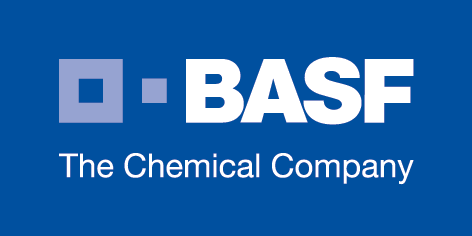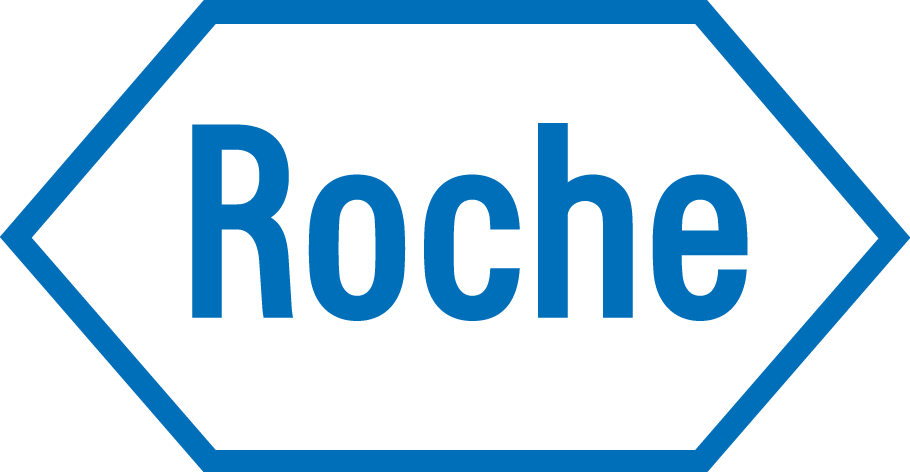Team:ETH Zurich/Interview2
From 2012.igem.org
Interview with National Council Mr. Markus Ritter
This is a translation from the german original audio file. Questions and answers (see below, for the original audio file contact the team) done by a student. We try to translate as accurately as possible, but we are no ribosomes. No mistake that arises through translation mistakes is intended.
Question: Is the continuation of the Moratorium on GMP a sign for the smaller acceptance in politics and society or the fear of the research in the field of GMOs here in Switzerland?
Answer: I think so. There is a fundamental reservation in Switzerland and generally in Europe in terms of genetically modified plants. This is certainly caused also because of food scandals, for example EHEC and BSE. The consumers are generally more sensible about food.
For genetic engineering we are still waiting for three main things:
- You need to show that genetically engineered plants will have more advantages than usual production methods,
- the coexistence between ordinary agriculture and genetic modified plants needs to be shown,
- and we still need to show that there will be no consequences with this technology.
The eyes are now on you and the research to proof these points. I would never intend to stop research.
Q: These examples of EHEC and BSE are no examples for genetic engineering. Do you think the fear of the people comes from not being well informed?
A: The more we are proceeding into the direction of globalisation and a highly technological world, the more people want untouched nature, culture and values, and they try to at least protect their food as an untouched refugium. They say: “No! Everything, but not our food!”
Q: But if we now consider that we can show drastic advantages and we can disprove the problems of coexistence then would it be best to leave people their economic freedom and allow genetic engineering of plants?
A: Well we are talking about a trend. If 135 national counsellors say “No” to GMPs then we’re talking about a trend. And if we go further down to the people the percentage will be even bigger. We had of course also people in the parliament that wanted to forbid genetic engineering once and for all, including the research. My position there is to keep the research safe and wait for the breakthrough. Cultivation experiments however, the ones that are prohibited, should be done in big agricultural states not here in Switzerland. But the research is important and we want to preserve it.
Q: How do you explain the paradox that medical GMOs that are used for drug production are accepted, but genetically modified plants are handled completely different?
A: There is a large difference between extraordinary situations, in which people will allow much more, and ordinary situations. The most important thing for people in Switzerland is their health, they want to stay healthy and eat healthy food. Nobody wants to take risks and until now no one has shown that GMOs are risk-free.
Q: Do you think that the farmer’s association was one or even „the“ driving force to get to this Gen-Tech-Stop?
A: Yes, you can say that. People have confidence in us as the farmer’s association and this brings large responsibility. Agriculture makes a large part of the beauty of Switzerland. People come to Switzerland because of our quality of life which is certainly determined also through our beautiful nature. And nature on the other hand is shaped by agriculture.
And in the end it is the farmers that will be affected the most from genetic engineered plants, because if the consumers fear GMPs it will directly impact their buying behaviour and this could be negative for the farmers.
Q: We see you are not a fundamentalist. But do you see also the potential of GMOs, like for example "Golden Rice"?
A: Yes, i think genetically modified plants have a large potential. But I think we have to carefully examine everything. We are currently running towards many big challenges, like climate change and increasing population. We may in the future be in need of plants that can grow in dry conditions. But we now have no hunger in Switzerland; nobody in this country knows the problem of hunger. So the potential is found more in the Third World.
Q: Do you think that negative publicity, for example for Monsanto, can influence the people?
A: Sure. Farmers for example are seen like saints. But words like „chemistry“ or „genetic engineering” imply something negative. That’s because people can remember scandals better than positive news. And you never get rid of infamy.
Q: Why do you think that GMOs are more accepted in USA than here in Europe?
A: There certainly is a difference in culture. That’s why we have now a different understanding of things, than Americans or other cultures. Europeans may also be more sensitive and therefore are more susceptible to what they read and hear.
German original Version
Q: Ist die Verlängerung des Moratoriums ein Indiz für die geringe politische und gesellschaftliche Wertschätzung oder die Angst vor der Forschung auf dem Gebiet der GVP in der Schweiz?
A: Ich denke schon. Es gibt eine grundsätzliche Zurückhaltung in der Schweiz und generell in Europa gegenüber gentechnisch veränderten Pflanzen. Begründet sicher auch durch Erfahrungen durch Lebensmittelskandale. Zwei Beispiele wären da EHEC oder auch BSE. Die Konsumenten sind generell sehr sensibel insbesondere gegenüber Nahrungsmitteln.
Bei der Gentechnik warten wir auf drei Punkte:
- Mehrwert nachweisen für die Landwirtschaft
- Koexistenz von Gentechnik freier Landwirtschaft und Gentechnik
- Nebenwirkungen?
Die Augen sind natürlich jetzt auf der Forschung um diese Punkte aufzuzeigen. Ich würde aber die Forschung keinesfalls zurückbinden.
Q: Diese Beispiele mit EHEC und BSE sind jedoch keine Fälle, die mit Gentech zu tun haben. Denken Sie daher nicht, dass diese Angst aus der mangelnden Aufklärung der Bevölkerung hervorgeht?
A: Je mehr wir Richtung Globalisierung und hochtechnisierte Welt gehen, desto mehr sehnen sich die Menschen nach unberührter Natur, Kultur und Werten und die Leute versuchen sich zumindest die Nahrungsmittel als unberührtes Rückzugsgebiet zu erhalten. Die Leute sagen grundsätzlich „Nein, aber nicht unser Essen!“
Q: Aber wenn wir jetzt annehmen wir zeigen erhebliche Vorteile und klären die Probleme mit der Koexistenz, dann müssten wir doch aufgrund der wirtschaftlichen Freiheit sagen, dass Gentech erlaubt werden soll.
A: Es ist natürlich ein Trend. Wenn 135 Nationalräte Nein sagen zu Gentech, dann ist das ein Trend. Und je weiter nach unten man geht, desto grösser wird dieser. Ja-Sager sind da auf dem Holzweg. Auf der anderen Seite hatten wir Anträge im Parlament, die Gentech vollständig verbieten wollten, inklusive Forschung. Und da bin ich auf der Seite, dass die Forschung frei sein soll und warte auf Ergebnisse, die den Mehrwert nachweisen können. Und Freisetzungsversuche sind doch viel wichtiger in grossen Agrarstaaten nicht hier in der Schweiz. Hier ist der Forschungsplatz wichtig und den wollen wir erhalten.
Q: Wie erklären sie sich das Paradoxon, dass der medizinische Nutzen von GMOs akzeptiert wird aber mit gentechnisch veränderten Pflanzen sieht das ganze anders aus?
A: Wir müssen unterscheiden zwischen ausserordentlichen Situationen, in diesen ist der Mensch zu vielem bereit, und normalen Situationen. Das wichtigste ist für Leute hier in der Schweiz gesund zu bleiben und dazu gehören gesunde Nahrungsmittel. Niemand möchte Risiken eingehen, und bisher kann niemand belegen wie und wo diese Risiken liegen, auch nicht in der Gentechnik.
Q: Würden Sie sagen, dass der Bauernverband eine oder sogar „die“ treibende Kraft war die diesen Gentechnik-Stopp voran gebracht hat?
A: Ja, das kann man wahrscheinlich so sagen. Dem Bauernverband wird ein grosses Vertrauen entgegengebracht und wir haben daher eine hohe Verantwortung. Und die Landwirtschaft trägt einen hohen Beitrag bei, zur Standort-Attraktivität der Schweiz. Leute kommen in die Schweiz auch wegen der Lebensqualität die sicher durch die Natur definiert ist und dort hat die Landwirtschaft einen grossen Einfluss.
Die Bauern sind schliesslich am meisten betroffen von der Entscheidung, denn die Angst der Konsumenten schlägt sich sofort im Kaufverhalten nieder und das schadet den Bauern.
Q: Wir sehen, sie sind kein Fundamentalist. Aber sehen Sie von Ihrer Seite das Potential, beispielsweise in GMOs wie "Golden Rice", der Gentechnik?
A: Ja, ich glaube die Gentechnik hat ein sehr grosses Potential. Ich glaube aber wir müssen vorher alles ganz genau abklären. Wir sehen riesigen Herausforderungen entgegen, wie dem Klimawandel und der stetig wachsenden Bevölkerung. Wir werden irgendwann vielleicht angewiesen sein auf Pflanzen, die wenig Wasser benötigen.
Aber in der Schweiz haben wir kein Hungerproblem, niemand kennt hier mehr das Problem wenn man Hunger hat. Das Potential ist sicher eher in der Dritten Welt.
Q: Glauben Sie auch, dass die negative Publicity, gerade auch von Monsanto, die Leute beeinflusst?
A: Sicher, wir Bauern haben zum Beispiel fast einen Heiligenschein. Alleine Wörter wie „Chemie“ oder „Gentechnik“ sind schon so negativ besetzt. Die Leute können sich einfach Skandale besser merken. Und einen negativen Ruf wird man auch nie mehr los.
Q: Warum denken sie, dass Gentechnik in den USA viel besser ankommt als hier in Europa?
A: Das ist natürlich ein Unterschied in der Kultur. Und gerade dadurch hat die USA sicher ein anderes Verständnis entwickelt als wir hier in Europa. Europäer sind wahrscheinlich viel sensibler und reagieren viel empfindlicher auf das, was sie lesen und hören.
References
- Brown, B. a, Headland, L. R., & Jenkins, G. I. (2009). UV-B action spectrum for UVR8-mediated HY5 transcript accumulation in Arabidopsis. Photochemistry and photobiology, 85(5), 1147–55.
- Christie, J. M., Salomon, M., Nozue, K., Wada, M., & Briggs, W. R. (1999): LOV (light, oxygen, or voltage) domains of the blue-light photoreceptor phototropin (nph1): binding sites for the chromophore flavin mononucleotide. Proceedings of the National Academy of Sciences of the United States of America, 96(15), 8779–83.
- Christie, J. M., Arvai, A. S., Baxter, K. J., Heilmann, M., Pratt, A. J., O’Hara, A., Kelly, S. M., et al. (2012). Plant UVR8 photoreceptor senses UV-B by tryptophan-mediated disruption of cross-dimer salt bridges. Science (New York, N.Y.), 335(6075), 1492–6.
- Cloix, C., & Jenkins, G. I. (2008). Interaction of the Arabidopsis UV-B-specific signaling component UVR8 with chromatin. Molecular plant, 1(1), 118–28.
- Cox, R. S., Surette, M. G., & Elowitz, M. B. (2007). Programming gene expression with combinatorial promoters. Molecular systems biology, 3(145), 145. doi:10.1038/msb4100187
- Drepper, T., Eggert, T., Circolone, F., Heck, A., Krauss, U., Guterl, J.-K., Wendorff, M., et al. (2007). Reporter proteins for in vivo fluorescence without oxygen. Nature biotechnology, 25(4), 443–5
- Drepper, T., Krauss, U., & Berstenhorst, S. M. zu. (2011). Lights on and action! Controlling microbial gene expression by light. Applied microbiology, 23–40.
- EuropeanCommission (2006). SCIENTIFIC COMMITTEE ON CONSUMER PRODUCTS SCCP Opinion on Biological effects of ultraviolet radiation relevant to health with particular reference to sunbeds for cosmetic purposes.
- Elvidge, C. D., Keith, D. M., Tuttle, B. T., & Baugh, K. E. (2010). Spectral identification of lighting type and character. Sensors (Basel, Switzerland), 10(4), 3961–88.
- GarciaOjalvo, J., Elowitz, M. B., & Strogatz, S. H. (2004). Modeling a synthetic multicellular clock: repressilators coupled by quorum sensing. Proceedings of the National Academy of Sciences of the United States of America, 101(30), 10955–60.
- Gao Q, Garcia-Pichel F. (2011). Microbial ultraviolet sunscreens. Nat Rev Microbiol. 9(11):791-802.
- Goosen N, Moolenaar GF. (2008) Repair of UV damage in bacteria. DNA Repair (Amst).7(3):353-79.
- Heijde, M., & Ulm, R. (2012). UV-B photoreceptor-mediated signalling in plants. Trends in plant science, 17(4), 230–7.
- Hirose, Y., Narikawa, R., Katayama, M., & Ikeuchi, M. (2010). Cyanobacteriochrome CcaS regulates phycoerythrin accumulation in Nostoc punctiforme, a group II chromatic adapter. Proceedings of the National Academy of Sciences of the United States of America, 107(19), 8854–9.
- Hirose, Y., Shimada, T., Narikawa, R., Katayama, M., & Ikeuchi, M. (2008). Cyanobacteriochrome CcaS is the green light receptor that induces the expression of phycobilisome linker protein. Proceedings of the National Academy of Sciences of the United States of America, 105(28), 9528–33.
- Kast, Asif-Ullah & Hilvert (1996) Tetrahedron Lett. 37, 2691 - 2694., Kast, Asif-Ullah, Jiang & Hilvert (1996) Proc. Natl. Acad. Sci. USA 93, 5043 - 5048
- Kiefer, J., Ebel, N., Schlücker, E., & Leipertz, A. (2010). Characterization of Escherichia coli suspensions using UV/Vis/NIR absorption spectroscopy. Analytical Methods, 9660. doi:10.1039/b9ay00185a
- Kinkhabwala, A., & Guet, C. C. (2008). Uncovering cis regulatory codes using synthetic promoter shuffling. PloS one, 3(4), e2030.
- Krebs in Deutschland 2005/2006. Häufigkeiten und Trends. 7. Auflage, 2010, Robert Koch-Institut (Hrsg) und die Gesellschaft der epidemiologischen Krebsregister in Deutschland e. V. (Hrsg). Berlin.
- Lamparter, T., Michael, N., Mittmann, F., & Esteban, B. (2002). Phytochrome from Agrobacterium tumefaciens has unusual spectral properties and reveals an N-terminal chromophore attachment site. Proceedings of the National Academy of Sciences of the United States of America, 99(18), 11628–33.
- Levskaya, A. et al (2005). Engineering Escherichia coli to see light. Nature, 438(7067), 442.
- Mancinelli, A. (1986). Comparison of spectral properties of phytochromes from different preparations. Plant physiology, 82(4), 956–61.
- Nakasone, Y., Ono, T., Ishii, A., Masuda, S., & Terazima, M. (2007). Transient dimerization and conformational change of a BLUF protein: YcgF. Journal of the American Chemical Society, 129(22), 7028–35.
- Orth, P., & Schnappinger, D. (2000). Structural basis of gene regulation by the tetracycline inducible Tet repressor-operator system. Nature structural biology, 215–219.
- Parkin, D.M., et al., Global cancer statistics, 2002. CA: a cancer journal for clinicians, 2005. 55(2): p. 74-108.
- Rajagopal, S., Key, J. M., Purcell, E. B., Boerema, D. J., & Moffat, K. (2004). Purification and initial characterization of a putative blue light-regulated phosphodiesterase from Escherichia coli. Photochemistry and photobiology, 80(3), 542–7.
- Rizzini, L., Favory, J.-J., Cloix, C., Faggionato, D., O’Hara, A., Kaiserli, E., Baumeister, R., et al. (2011). Perception of UV-B by the Arabidopsis UVR8 protein. Science (New York, N.Y.), 332(6025), 103–6.
- Roux, B., & Walsh, C. T. (1992). p-aminobenzoate synthesis in Escherichia coli: kinetic and mechanistic characterization of the amidotransferase PabA. Biochemistry, 31(30), 6904–10.
- Strickland, D. (2008). Light-activated DNA binding in a designed allosteric protein. Proceedings of the National Academy of Sciences of the United States of America, 105(31), 10709–10714.
- Sinha RP, Häder DP. UV-induced DNA damage and repair: a review. Photochem Photobiol Sci. (2002). 1(4):225-36
- Sambandan DR, Ratner D. (2011). Sunscreens: an overview and update. J Am Acad Dermatol. 2011 Apr;64(4):748-58.
- Tabor, J. J., Levskaya, A., & Voigt, C. A. (2011). Multichromatic Control of Gene Expression in Escherichia coli. Journal of Molecular Biology, 405(2), 315–324.
- Thibodeaux, G., & Cowmeadow, R. (2009). A tetracycline repressor-based mammalian two-hybrid system to detect protein–protein interactions in vivo. Analytical biochemistry, 386(1), 129–131.
- Tschowri, N., & Busse, S. (2009). The BLUF-EAL protein YcgF acts as a direct anti-repressor in a blue-light response of Escherichia coli. Genes & development, 522–534.
- Tschowri, N., Lindenberg, S., & Hengge, R. (2012). Molecular function and potential evolution of the biofilm-modulating blue light-signalling pathway of Escherichia coli. Molecular microbiology.
- Tyagi, A. (2009). Photodynamics of a flavin based blue-light regulated phosphodiesterase protein and its photoreceptor BLUF domain.
- Vainio, H. & Bianchini, F. (2001). IARC Handbooks of Cancer Prevention: Volume 5: Sunscreens. Oxford University Press, USA
- Quinlivan, Eoin P & Roje, Sanja & Basset, Gilles & Shachar-Hill, Yair & Gregory, Jesse F & Hanson, Andrew D. (2003). The folate precursor p-aminobenzoate is reversibly converted to its glucose ester in the plant cytosol. The Journal of biological chemistry, 278.
- van Thor, J. J., Borucki, B., Crielaard, W., Otto, H., Lamparter, T., Hughes, J., Hellingwerf, K. J., et al. (2001). Light-induced proton release and proton uptake reactions in the cyanobacterial phytochrome Cph1. Biochemistry, 40(38), 11460–71.
- Wegkamp A, van Oorschot W, de Vos WM, Smid EJ. (2007 )Characterization of the role of para-aminobenzoic acid biosynthesis in folate production by Lactococcus lactis. Appl Environ Microbiol. Apr;73(8):2673-81.
 "
"






